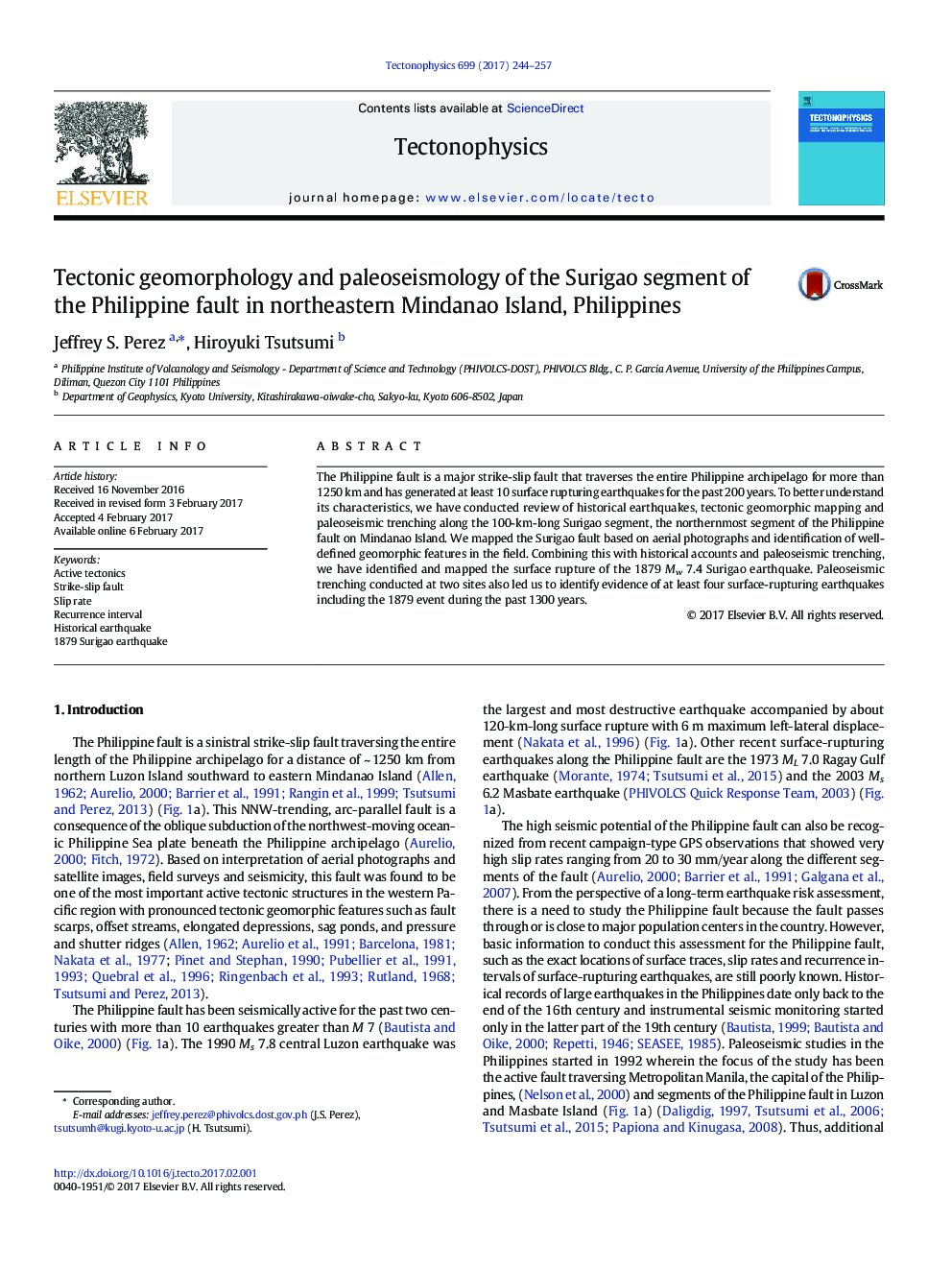| Article ID | Journal | Published Year | Pages | File Type |
|---|---|---|---|---|
| 5781750 | Tectonophysics | 2017 | 14 Pages |
Abstract
The Philippine fault is a major strike-slip fault that traverses the entire Philippine archipelago for more than 1250Â km and has generated at least 10 surface rupturing earthquakes for the past 200Â years. To better understand its characteristics, we have conducted review of historical earthquakes, tectonic geomorphic mapping and paleoseismic trenching along the 100-km-long Surigao segment, the northernmost segment of the Philippine fault on Mindanao Island. We mapped the Surigao fault based on aerial photographs and identification of well-defined geomorphic features in the field. Combining this with historical accounts and paleoseismic trenching, we have identified and mapped the surface rupture of the 1879 Mw 7.4 Surigao earthquake. Paleoseismic trenching conducted at two sites also led us to identify evidence of at least four surface-rupturing earthquakes including the 1879 event during the past 1300Â years.
Related Topics
Physical Sciences and Engineering
Earth and Planetary Sciences
Earth-Surface Processes
Authors
Jeffrey S. Perez, Hiroyuki Tsutsumi,
